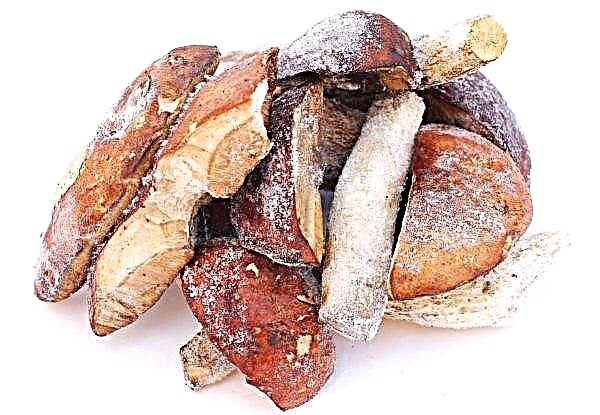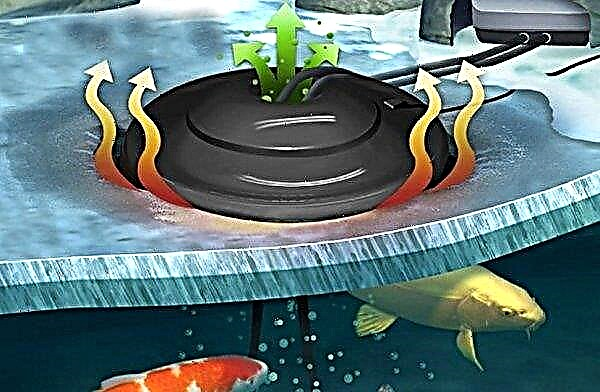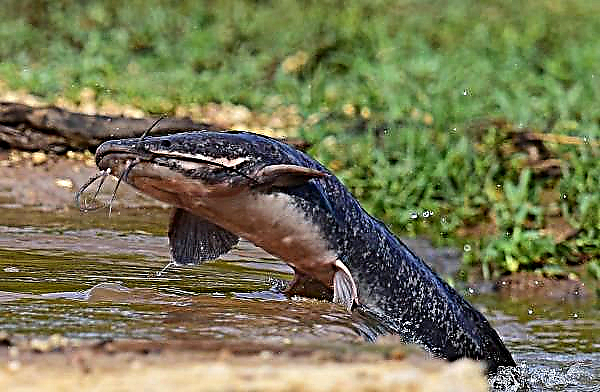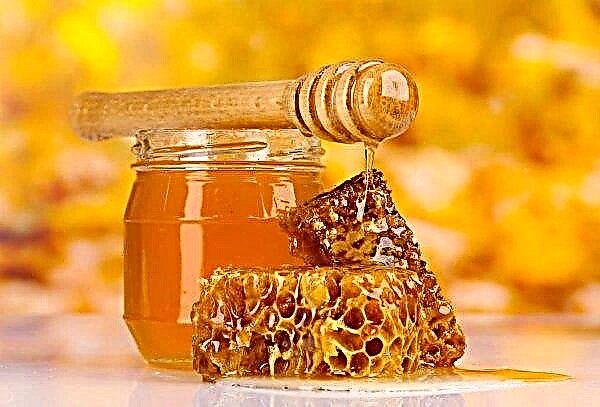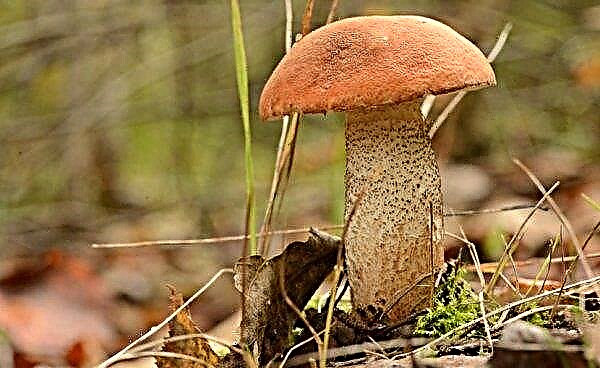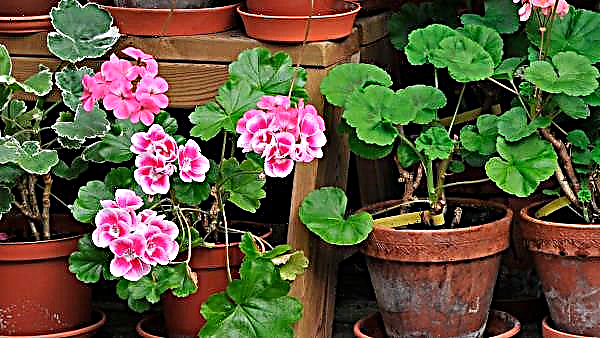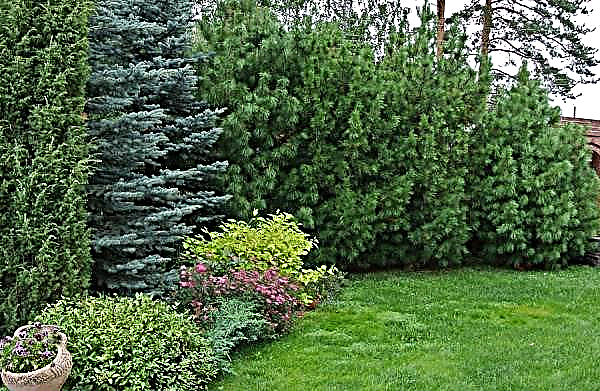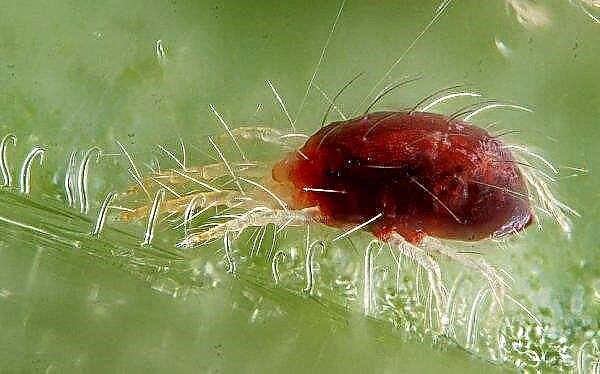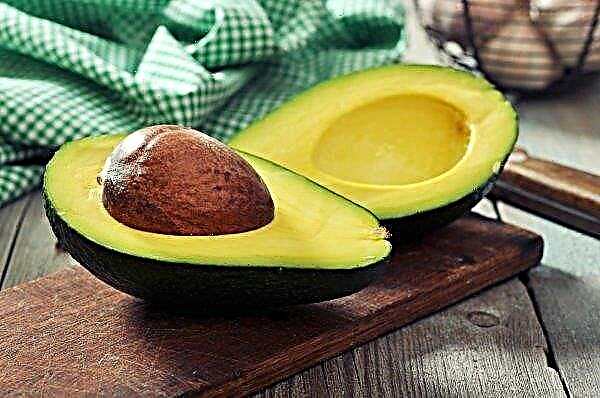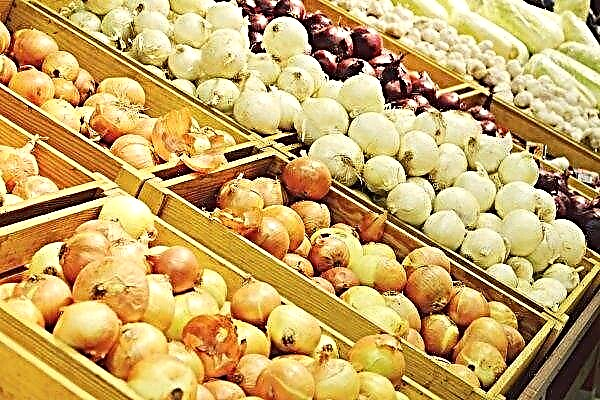Modern vegetable growing has a huge number of cultivated plant varieties, among which Kale cabbage stands out. It has a unique and uncharacteristic form, as well as an amazing taste that can complement any dish. The article will examine in detail what it is - Kale cabbage, as well as the subtleties of its successful cultivation.
Grade description
Kale is one of the most interesting and useful for plants cultivated plants. This cabbage is unpretentious, and is also able to delight with rich harvests in almost any climatic conditions. In addition, the culture has a high decorative value, so it can successfully complement the diverse planting of small summer cottages.
Grade characteristics
This plant is a two-year-old herbaceous variety of cabbage used in food, as well as for feed purposes. They belong to the large cruciferous family; therefore, Kale is genetically the closest relative to traditional heading varieties. The main distinguishing feature of the variety is the absence of a branched stem: instead, the entire aboveground part is occupied by a surface leaf rosette, assembled from large leaves.
The root system of Kale is of the rod type, with a powerful axial root and thin numerous lateral branches. A small rounded stem emerges from it, but in some varieties it can reach about 50-100 cm in length. Like all members of the family, the plant blooms in the second year of vegetation; At this time, numerous flowers collected in characteristic inflorescences develop on the bush. Productivity of a grade is high, from 1 m² it is often possible to collect from 3 to 6 kg of products.
There are several varieties of kale:
Taste qualities of Kale: the crop is characterized by a special delicate structure and a moderately rich taste. Fresh leaves are dense and crisp, after heat treatment are soft and tender. The pulp is juicy and sweet, with a distinct cabbage flavor and aftertaste, the sharpness is not inherent in it. After freezing, sweetness and cabbage flavor increase sharply. Young leaflets do not have bitterness, but overripe ones may have a palpable bitterness.Variety Breeding
Curly cabbage has been known to humans for several millennia. As historical artifacts indicate, this name of the fruit plant existed even in the days of Hellenistic Greece, where it played one of the key roles in agriculture as a universal food and feed crop. In Europe, the plant appeared in the Middle Ages, after which its full cultivation began.
Did you know? In Australia, Kale is a traditional ornamental plant, varieties with bright red and purple leaves are used for landscaping urban landscapes and household plots.
Modern varieties of vegetables appeared in the second half of the twentieth century. At this time, new highly productive varieties of Kale were introduced, the active development and improvement of which continues today.
Description of the fetus
As such, the fruit of the variety does not exist. Valuable for food and feed purposes are numerous leaflets that develop from a common leaf outlet. Depending on the hybrid, their length varies from 10–20 to 50–100 cm, and their width is from 5 to 15 cm. They are characterized by a strong dissection of the edges with all kinds of curls, up to separation into separate parts. However, there are smooth-leaved forms. The base of the leaf is a soft leaf stem, to which individual small branches are attached. This creates a special curly structure, which gives the plant excellent decorativeness. The veins on the leaf are convex, highly branched. The color of the leaves is diverse, from saturated green hues to burgundy red and purple tones.
The base of the leaf is a soft leaf stem, to which individual small branches are attached. This creates a special curly structure, which gives the plant excellent decorativeness. The veins on the leaf are convex, highly branched. The color of the leaves is diverse, from saturated green hues to burgundy red and purple tones.
Benefits and harm to the body
Kale cabbage is one of the most valuable plants used by humans for food. It is low-calorie, but it is characterized by a sufficiently high nutritional value, which helps to create a comprehensive and healthy diet best of all. The composition of the leaves contains valuable amino acids and proteins, which makes it possible to replace meat with all kinds of diets.
Important! In case of any food allergy, the introduction of Kale into the daily diet should be carried out only after consulting with doctors.
The composition of the vegetable contains a huge amount of vitamins, rare minerals and antioxidants, the active interaction of which is capable of:
- normalize and improve the digestive tract;
- restore the functioning of the organs of vision;
- improve blood structure, including coagulation;
- provide the body with readily available forms of calcium;
- inhibit pathogenic microflora in the body;
- stimulate the immune system;
- protect organs and tissues against the development of oncological formations.

Pros and cons of the variety
- The main beneficial properties of the vegetable:
- high productivity;
- excellent taste;
- frost resistance;
- unpretentiousness to growing conditions;
- short growing season;
- high decorative bushes.
- Not without Calais and shortcomings:
- it is susceptible to many characteristic pests and infections of the culture;
- bushes require timely harvesting, otherwise the taste characteristics are sharply reduced;
- the plant does not reproduce seed during the first generation.
Optimal landing times
Since curly cabbage quickly grows and develops, and also tolerates low temperatures, they begin to propagate long before the onset of the summer thaw. Seeds are able to give the first seedlings already at a temperature of +5 ... + 10 ° С, therefore, they resort to sowing crops in open soil in a temperate climate at the end of April.
At the same time, crops need to create a protective shelter from polyethylene or other materials. Seedlings are planted a little later - for this the air should warm up to at least + 15 ° C. The most optimal microclimate for this occurs in the first half - mid-April.
Growing Features
It is not difficult to grow such an exotic cabbage - it does not require a special microclimate for itself, therefore it can be successfully grown in almost any soil. Despite this, when cultivating a plant, it is imperative to study the basics of agricultural technology for cultivating not only cruciferous, but also green aromatic herbs. Only in this case, you can get a quality crop rich in all kinds of useful substances.
Seed preparation
To achieve high friendliness of seedlings and effective seed growth, they must be pre-prepared before sowing. For this, the seed is soaked for 15–20 minutes in warm water (+45 ... + 50 ° С). After that, the seeds are dipped in cold water for 5 minutes, and then wrapped in one layer of moist gauze and put in a warm place for 3 days. After this time, small sprouts will appear on the seeds, after which they can be successfully sown in the soil.
Immediately before sowing, seeds are recommended to be treated with fungicide solutions. This procedure will protect young shoots from damage by a variety of pathogenic fungi, which in the germ phase can cause the death of both individual plants and the entire seedlings. The most effective of them are considered solutions of the preparations "Fitosporin", "Tiovit", "Fital" and "Fundazol".
Preparation of soil for seedlings
Often cabbage is grown in two ways: with the help of loose soil, and the so-called cassettes for seedlings. Cassettes are specially prepared soil containing all the necessary nutrients and minerals, as well as all kinds of growth stimulants. Such mixtures do not require special preparation, however, they are not able to meet the individual needs of the variety, therefore, many gardeners start preparing the soil mixture on their own. Culture grows only on well-fertilized soils; A variety of peat-based substrates are best suited for this. To improve the mechanical properties of the soil, it is diluted by a third with crushed sawdust. To saturate the peat-sawdust substrate with all kinds of nutrients, it is fertilized with mineral mixtures.
Culture grows only on well-fertilized soils; A variety of peat-based substrates are best suited for this. To improve the mechanical properties of the soil, it is diluted by a third with crushed sawdust. To saturate the peat-sawdust substrate with all kinds of nutrients, it is fertilized with mineral mixtures.
To do this, add 10 l of soil:
- 20 g of urea;
- 300 g of dolomite flour;
- 250 g of wood ash;
- 50 g of superphosphate.
Before planting, the soil must be sterilized.
Perform the procedure in one of the following ways:
- warming in the oven for 15–20 minutes at + 125 ° C;
- steaming in the microwave for 5-10 minutes;
- freezing in a freezer for 3-4 days, at -20 ...- 25 ° C;
- watering a 2% solution of potassium permanganate.

Sowing seeds for seedlings
Sown seeds, both in general and in individual garden containers. They can be made of any material (plastic, metal, glass, etc.), while it must be safe and completely non-toxic to plants and humans.
In common garden pots, cabbage is sown in a row-wise way, with 3 cm row spacing. The beds are sown densely, but then they must be thinned out so that at least 3 cm in a row is provided for one sprout. When planting individually, choose small garden cups with a diameter of at least 5 cm. 3-4 seeds are sown in each of them, of which no more than 1 sprout is left for further development.
Important! Sow the seeds in depth no more than 1.5 cm, otherwise the seedlings will be doubled, and some seeds will die at all.
Seedling Care
Kale sprouts at a low temperature range, so this plant is not difficult to grow. Germinate seeds at a day temperature of about + 20 ° C, and night - not higher than + 6 ° C. After the appearance of the first seedlings (on days 4–8), cabbage is grown at +14 ... + 16 ° С, until transplantation into open soil. This mode is needed in order to avoid excessive stretching of plants in height, which often leads to fragility of the bush even before planting in open soil. The lighting regime is also important for Kale: the plant is demanding for light, so its lack can cause inhibition of seedling growth. To avoid this, cabbage is sprouted on the southern, well-lit window sills. Like any greens, cabbage responds well to quality watering. The soil under the seedlings should not dry out, so it is watered at least 2-3 times a week. At the same time, water is added in small portions, since over-moistening of the substrate causes rotting of the root system.
The lighting regime is also important for Kale: the plant is demanding for light, so its lack can cause inhibition of seedling growth. To avoid this, cabbage is sprouted on the southern, well-lit window sills. Like any greens, cabbage responds well to quality watering. The soil under the seedlings should not dry out, so it is watered at least 2-3 times a week. At the same time, water is added in small portions, since over-moistening of the substrate causes rotting of the root system.
Before transplanting into open soil, seedlings should be fed. In the phase of active growth, plants need twice the amount of nitrogen, so the soil is necessarily fertilized. The procedure is performed twice, 2 and 4 weeks after the appearance of the first shoots, using a variety of mineral nitrogenous substances. The simplest option is considered to be urea and ammonium nitrate solutions (50-100 g per 10 liters of water).
Transplanting seedlings into the ground
Kale is transplanted into open soil from the beginning to mid-May. At this time, the plant enters the phase of 3-4 true leaves, which indicates the appearance of a powerful root system on seedlings. At this point, their age should be from 40 to 50 days after germination. Cabbage is planted in open and well-lit areas, protected from the shade of tall vegetation. Planting is carried out in a row or hole method, while the plants are placed in the planting zone evenly, at a distance of about 30-40 cm from each other. Since young cabbage has a delicate root system, planting is recommended to be carried out together with seedlings. Plants are planted to a depth of about 5-10 cm, while the basal leaf rosette must be located above the surface of the site.
Planting is carried out in a row or hole method, while the plants are placed in the planting zone evenly, at a distance of about 30-40 cm from each other. Since young cabbage has a delicate root system, planting is recommended to be carried out together with seedlings. Plants are planted to a depth of about 5-10 cm, while the basal leaf rosette must be located above the surface of the site.
Did you know? The first mention of Kale cabbage is found in ancient Greek scripts dating back to the 4th millennium BC. e. Since that time, all modern varieties have their origin, since earlier only wild forms were consumed.
Plant care
To grow curly cabbage on the site without any problems, it is necessary to create a special soil and climate regime. For the active growth of plant mass, it is important to provide Kale with good dressing and watering. Otherwise, the foliage will fade already at the beginning of summer, and the crop will become unsuitable for consumption.
Watering and feeding
Watering and top dressing is carried out regularly. The plants are humidified at least 3 times a week, but during the summer drought, the plants require daily watering. For this purpose, clean and settled water is used, slightly warmed up to ambient temperature. Watering the cabbage under the root, but periodic moistening of the leaves of Kale is not contraindicated, and with moderate use it will only favorably affect the yield. Plantations are fed every 6 weeks, up to the last week of harvest. To do this, use a variety of highly nutritious organic mixtures. The most acceptable among them is a compost solution (2 kg per 10 liters of water), which is insisted on warming for about a day. You can replace it with a solution of cow manure (1:10) or chicken droppings (1:15).
Plantations are fed every 6 weeks, up to the last week of harvest. To do this, use a variety of highly nutritious organic mixtures. The most acceptable among them is a compost solution (2 kg per 10 liters of water), which is insisted on warming for about a day. You can replace it with a solution of cow manure (1:10) or chicken droppings (1:15).
Soil loosening
Loosen the soil near Calais regularly, at least 1 time per week, carrying out additional processing the next day after intensive irrigation or rains. This is necessary in order to avoid the development of weeds on the site, the toxins of which can inhibit the growth and development of cabbage. In addition, during the procedure, soil is saturated with free oxygen, which favorably affects the growth of plants. Perform the procedure using standard garden tools (glanders), to a depth of not more than 5-8 cm.
Diseases and pests
With strict adherence to cultivation agricultural techniques, Kale is rarely affected by any pests and diseases, but often many gardeners still encounter this problem.
Most often, cabbage is affected:
- black leg;
- alternariosis;
- sclerotinia;
- fomosis;
- aphids;
- bedbugs;
- fleas;
- cabbage moth.
To prevent the development of infections and pests, plantations 1 time per month for prophylactic purposes are treated with complex protective preparations. Most often, various folk remedies are used for this, among which the most popular are:
Most often, various folk remedies are used for this, among which the most popular are:
- spraying with onion infusion - 500 g of husk per 3 l of boiling water;
- processing 7% vinegar - prepare it from 1 liter of vinegar, 150 g chicken droppings and 10 liters of water;
- dusting with wood ash or tobacco dust.
Important! It is not recommended to treat Kale with chemicals - often they are inactivated for a long time on the surface of the foliage, which saturates the crop with toxic derivatives of decay.
Features of collection and storage
If all the requirements are met, Kale is able to bear fruit throughout the summer and the first half of autumn. This makes it possible to enjoy a fragrant vegetable throughout the growing season and successfully prepare it for the winter. The harvest should be approached no less carefully than the care of the beds.
To do this, you must:
- tear off leaves no more than 30–40 cm long; larger ones lose their aroma and tenderness;
- daily examine the beds, as the leaves grow unevenly;
- cut no more than 2-3 leaves from 1 bush, an excessively intense harvest of greens can cause plant death;
- start collecting only after the average height of the plants exceeds 20 cm;
- after feeding, withstand at least 1 week before harvesting, this will help to avoid a high concentration of nitrates in the green mass.
Harvested crops should be immediately transferred to the refrigerator, even just a few hours of leaves in the heat can lead to their instant withering. In a refrigerator, cabbage is stored in individual plastic bags or in a cling film. In this form, at a temperature of 0 ... + 5 ° C, they are able to maintain their freshness for 1-3 weeks. If you want to stock up on cabbage for the whole winter, the ideal option would be freezing in the freezer. She perfectly preserves the structure of the leaves and their taste for several months.
In this form, at a temperature of 0 ... + 5 ° C, they are able to maintain their freshness for 1-3 weeks. If you want to stock up on cabbage for the whole winter, the ideal option would be freezing in the freezer. She perfectly preserves the structure of the leaves and their taste for several months.
Cooking features
Kale cabbage is one of the most versatile plants. It is successfully combined in fresh salads with other vegetables or used as a side dish for meat and fish. In this case, it is cooked in a boiled, stewed and even fried form. It can also become the main ingredient in the preparation of vegetarian cutlets, fritters and more.
With proper processing, it can be used to harvest pickles, including pickled products, not inferior in taste to white cabbage. Over the past decade, vegetables have become one of the traditional ingredients in making smoothies. Such a semi-viscous drink can successfully supplement any diet, or become the best option for a healthy snack during the day. Kale is the best fruit culture that will successfully complement any summer cottage. It is nutritious, contains a huge amount of useful substances, and is also suitable for any culinary processing. In addition, such a plant will fit perfectly into any landscape design, since all kinds of Kale have valuable decorative value.
Kale is the best fruit culture that will successfully complement any summer cottage. It is nutritious, contains a huge amount of useful substances, and is also suitable for any culinary processing. In addition, such a plant will fit perfectly into any landscape design, since all kinds of Kale have valuable decorative value.

